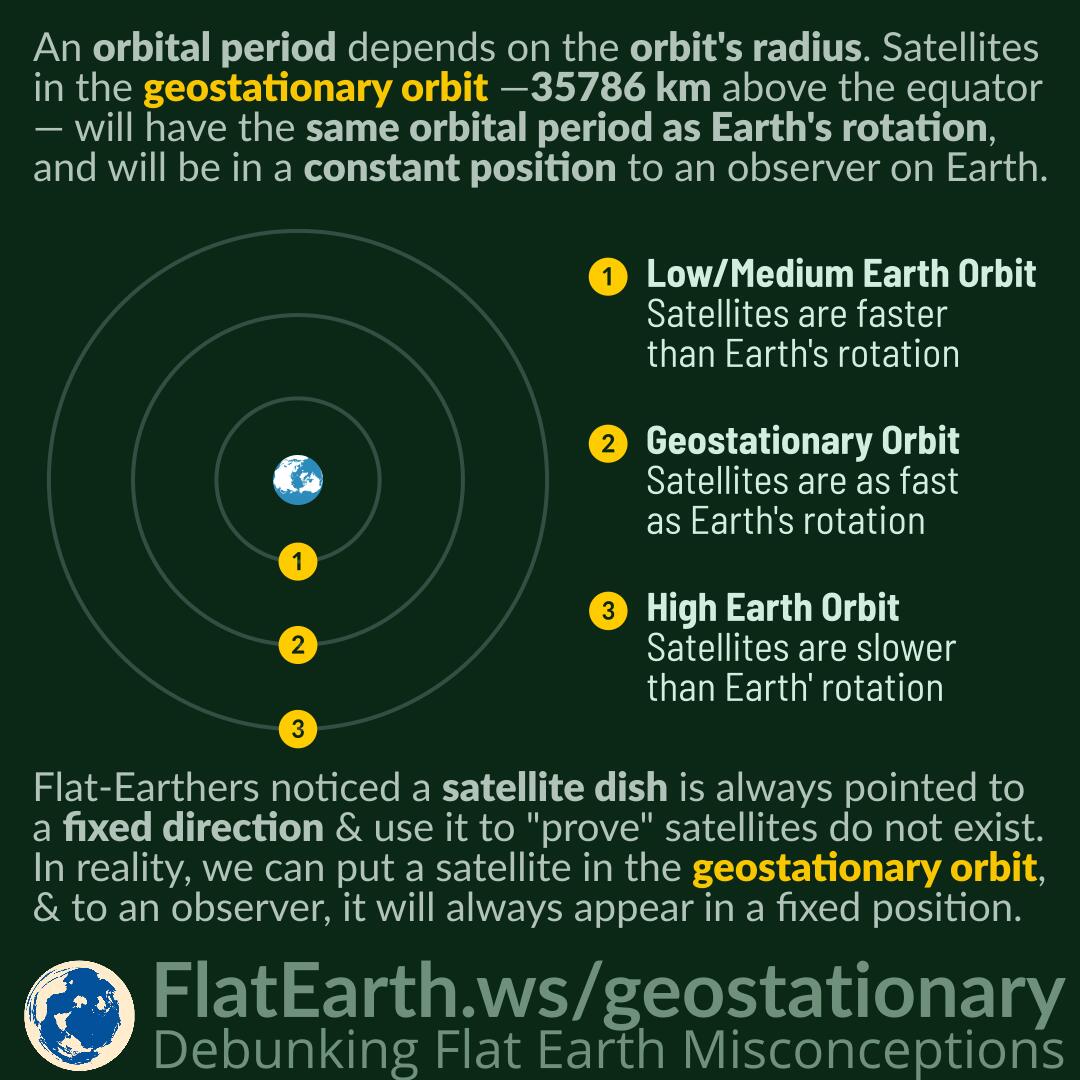If a satellite is placed in an orbit 35786 km above the equator, it will be in motion at the same speed as the Earth’s rotation. As a result, the satellite will appear practically motionless from an observer on Earth’s surface. Many communication satellites are in this orbit so that a satellite receiver does not need to track the satellite continuously.
Flat-Earthers often take the fact that satellites are in motion, and most satellite dishes have a fixed direction as ‘proof’ the receivers cannot be pointing to satellites. In reality, it is possible to place a satellite in a geostationary orbit to make it appear in a fixed position in the sky relative to an observer on Earth.
The lower the altitude of the orbit of a satellite, the higher its orbital speed. And conversely, the higher the orbit, the lower the orbital speed. From this relation, we can determine the orbital radius where the angular speed matches that of the Earth’s rotation. Such an orbit has an altitude of 35786 km above the equator. This orbit is called geostationary orbit. Any satellite placed in this orbit will have a fixed position relative to an observer on Earth.
Because a geostationary satellite appears motionless relative to Earth’s surface, a satellite receiver can be pointed to a fixed direction and does not need to track the satellite continuously.
A geostationary satellite has to orbit above the equator. As a result, a satellite dish in the northern hemisphere needs to be pointed towards the south. And conversely, a satellite dish in the southern hemisphere needs to be pointed toward the north.
References
- Geostationary orbit – Wikipedia


